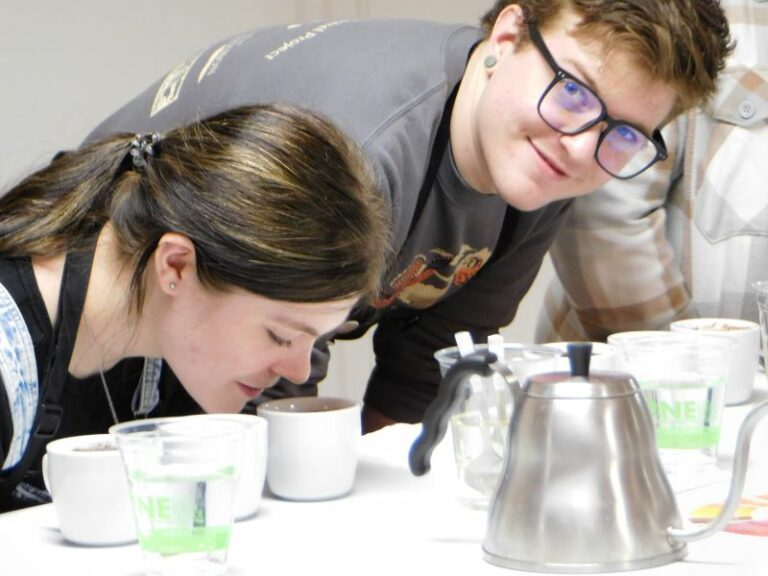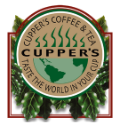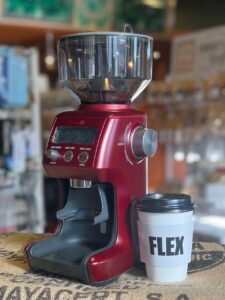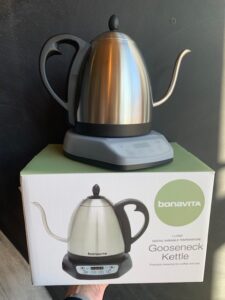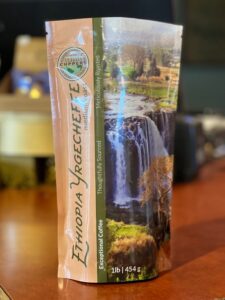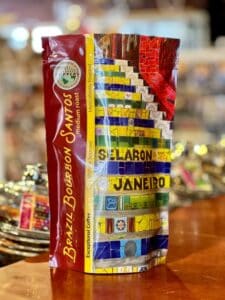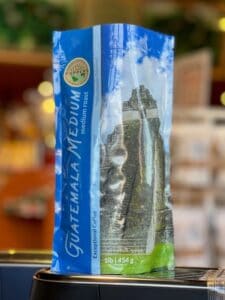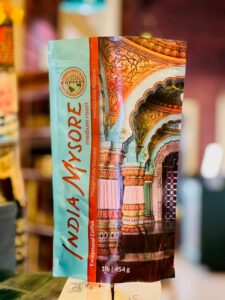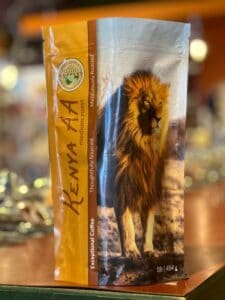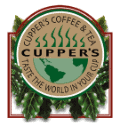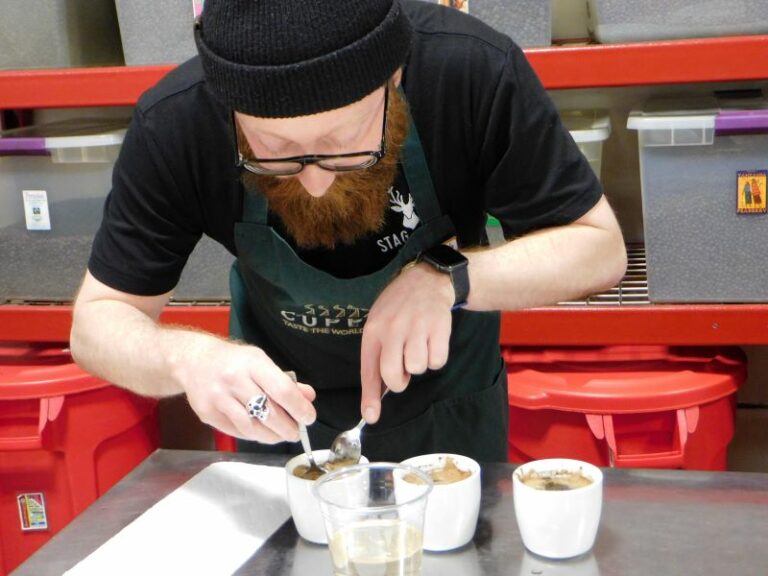
Cupping Coffee vs. Tasting Coffee
Cupping coffee and tasting coffee both test the flavour and aroma of coffee, but in different ways.
Differences Between Cupping vs. Tasting Coffee
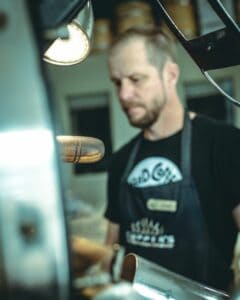
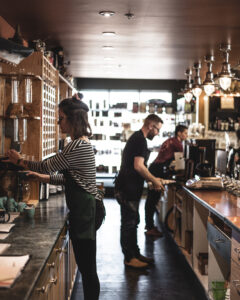

What is Cupping?
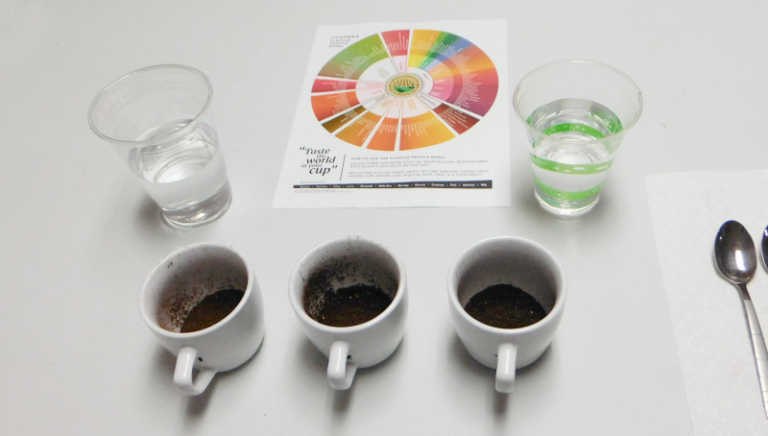
First, let’s start with sweetness.
Next up, acidity.
Now, think of the body.
How about the flavour?
Last, aftertaste.
Is there additional flavour info?
The History of Cupping Coffee
The Origin of Cupping Coffee
Clarence E. Bickford worked as a green coffee broker in San Francisco in the late 1800s. He developed a technique that revolutionized the coffee game. He’d weigh his beans, grind them up, and pour in boiling water. Then he’d wait for 4-5 minutes before tasting them with a big spoon. He called this the “Cup Test”. He realized tasting coffees in a controlled environment allowed him to better assess the quality. Before his testing, experts only graded coffee by its appearance. Smaller green beans were often associated with lower quality coffees. By tasting different coffees from all over, he realized some small beans have big flavour!
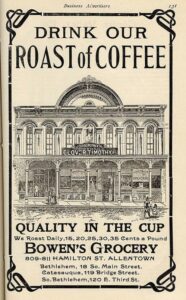
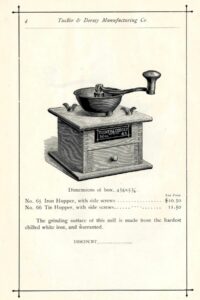
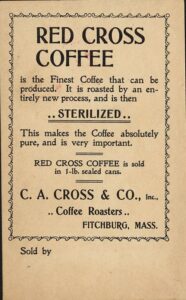
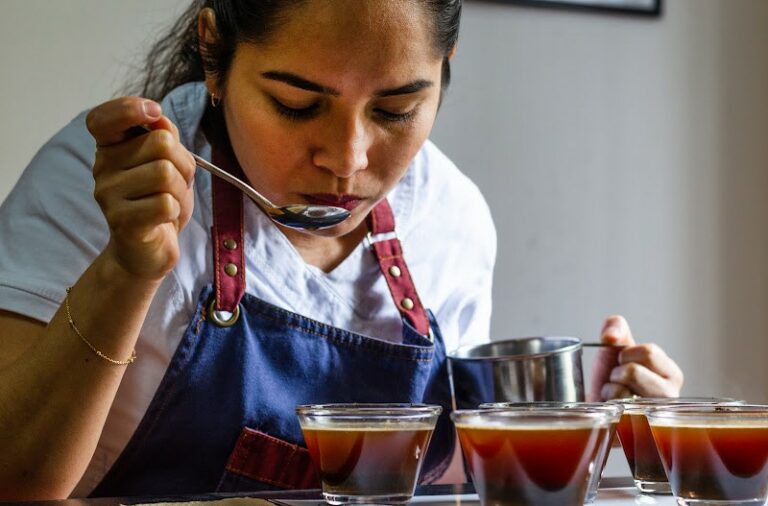
The Evolution of Cupping Coffee
The Purpose of Cupping Coffee
Identifying Coffee Quality
At Cupper’s, we test every coffee before we purchase them. First, we order small sample batches of the coffee from our suppliers. When we receive our samples, we test-roast these at several different roast levels in our tiny sample roaster. We confirm the quality and taste profiles of our regular coffees, and do extra testing on any special coffees we’re ordering. Only then do we place our orders of the coffees we want for our Cupper’s customers.
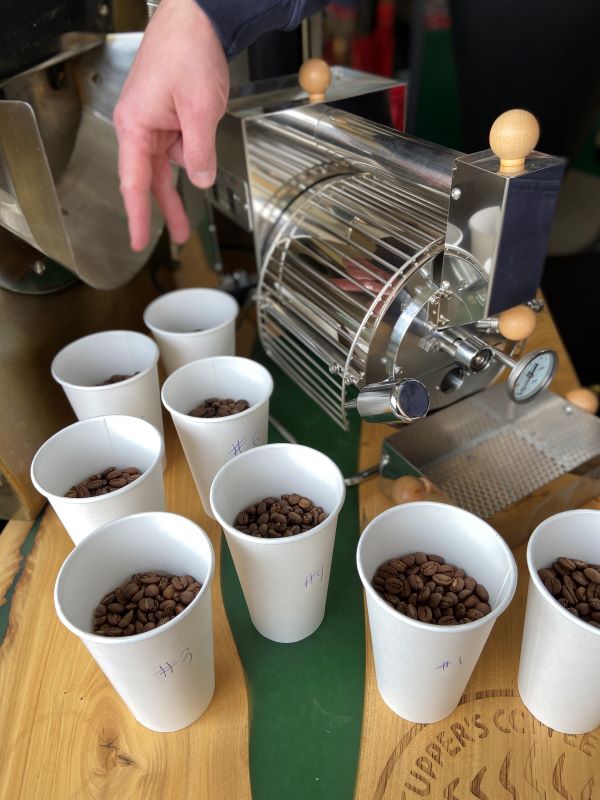
When brokers are sourcing green beans they also need to ensure the quality of the coffee they are buying. People in the coffee industry hire Quality Graders (Q Graders) to test coffees. We have an excellent relationship with our coffee suppliers. This includes one of our main suppliers, Royal Coffee. Their coffee is rigorously tested before and when they receive it. They have a team of Q Graders who are always developing their pallet and fine tuning their skills.
Once we receive the pallets of coffee, especially if it’s a new coffee or a new crop year, we’ll cup it at least one more time to test it again. It’s then that the final determination of the flavour notes are done by our roaster. It’s his decision based on his cupping and tasting the coffee that sets the roast we’ll do for our green beans.
Understanding Flavour Profiles
Understanding flavour notes of coffee is valuable for anyone in the coffee industry. Knowing the nuances of each coffee can help a roaster or coffee shop owner create the perfect cup. For a barista, it can mean the difference between a mediocre cappuccino or a masterpiece. For more information, check out our blog post on the Cupper’s Flavour Wheel. It’s a great way to help you define and expand on the flavours and flavour notes you taste in your coffee.
Cupping Coffee: The Step by Step Process
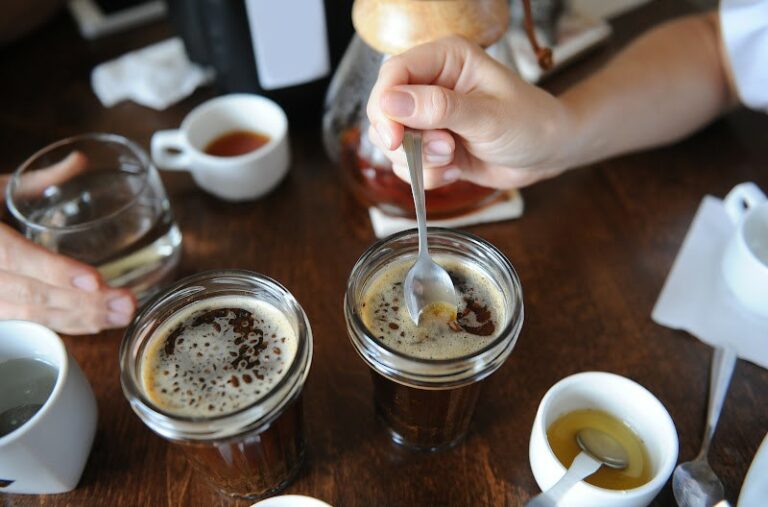
Equipment Needed for Cupping Coffee
1. Brewing Vessels
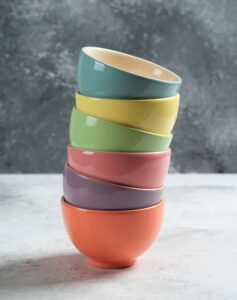
2. Cupping Spoons
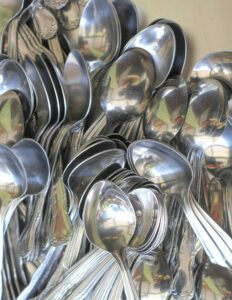
A cupping spoon is a bit deeper than a regular spoon. It has a specific shape made to scoop the most coffee grounds out of your testing cup. It is common to see cupping spoons made of non-reactive metal or ceramic. Any tablespoon will work for you, and several tablespoons are better. You don’t need to overthink the spoon.
3. Coffee Grinder
4. Weigh Scale
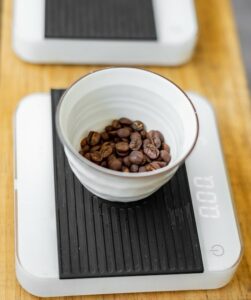
5. Timer
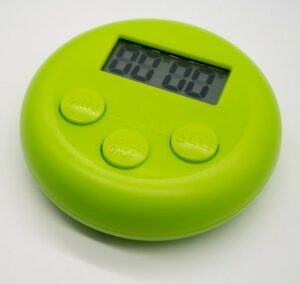
You’ll need a timer so you can time the extraction of each coffee. You can either use a digital one that you might have in your kitchen, or be like us. We used our cell phones. They’re precise, easy to use, have large clear displays, and pretty much everyone has one.
6. Rinse Cup
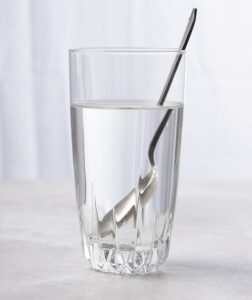
Every time your spoons switch between coffees, you want to avoid crossing flavours. Your rinse cup or glass is a good, fast way to clean your spoons off. The exception is if you are using new spoons for each coffee.
Either way, for a solid cupping, you want to avoid crossing flavours with a dirty spoon.
7. Hot Kettle
You will need a good kettle to heat up your water. Electric or stovetop doesn’t matter. What does matter is that it reaches a consistent temperature every time. The idea with cupping is to cut as many variables as possible. So, your coffee should steep in the same temperature water in each cup. We like the Bonavita Gooseneck Variable Temp Kettle. You can set the temperature at exactly what you want.
8. Grounds Vessel
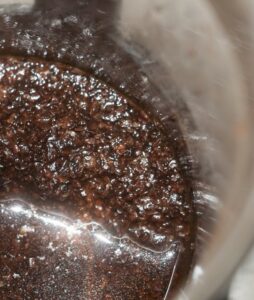
You’re going to need a place to put the discarded grounds during the cupping process. Any bowl or tabletop dish will do. This doesn’t need to be fancy, it’s just needed to hold the wet grounds. Lots of wet grounds!
9. Cupper's Coffee Flavour Wheel
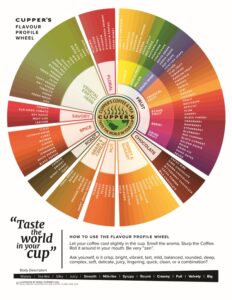
The Coffee Flavour Wheel is a great, useful coffee tasting tool. It breaks down the tastes in your coffee into different categories. It also makes it easier to compare what what you find in different coffee samples. It’s designed to make sure everyone is using the same words to describe the same flavours in what you’re tasting.
How to Cup Coffee
As stated above, cup several different coffees at the same time to learn about each of them. Do the full cupping process with all the coffees you are tasting all at the same time. Don’t do them one at a time, or a true comparison is difficult.
1. Measure Out Your Coffee
Measure out 10 grams of coffee for each cup. As stated above, if you don’t have a scale, use the same measuring spoon and use the exact same amount in each. This gives the consistency needed if you can’t weigh it.
2. Grind Your Coffee
If you have your own grinder, grind your coffee after you’ve weighed it. For best results it should be coarse like sea salt. Think of the same grind that you would use for brewing a French press.
If we’re grinding it for you, simply add the 10 grams of ground coffee to your cup.
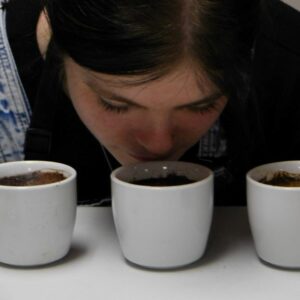
3. Smell the Coffee
4. Steep Your Coffee
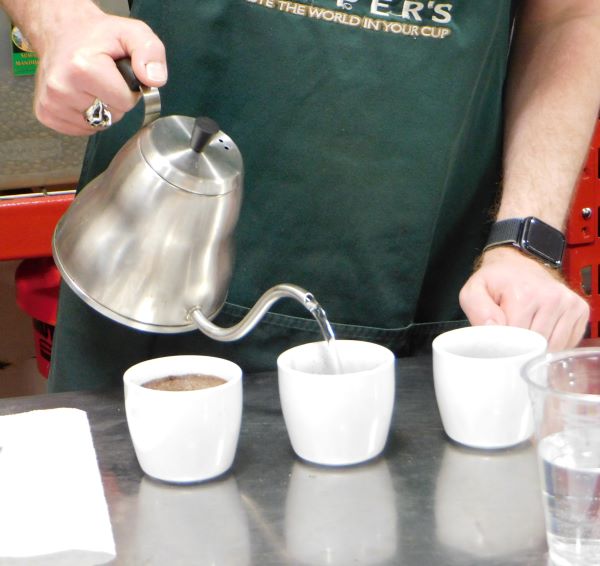
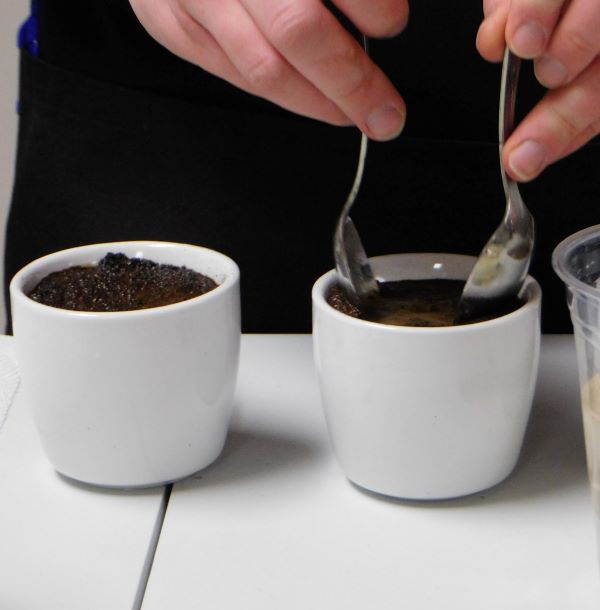
5. Break the Crust
6. Taste the Coffee
At last! It’s finally time for you to taste your amazing coffee! First, don’t pick the bowl up. Grab a fresh spoon and stir the coffee. This allows the remaining grounds to settle out to the bottom. Then lower the spoon, fill its bowl, and take a small slurp of coffee. Don’t worry if you get a few grounds in your slurp… that’s going to happen and it’s okay!
This is where your Cupper’s Coffee Flavour Wheel really comes into action. Make sure to sip and taste your coffee while looking at the broad flavours first. Once you identify a few of those, you can expand outwards, getting more specific as you go. But remember… there’s no right or wrong here. Flavour is a very subjective thing!
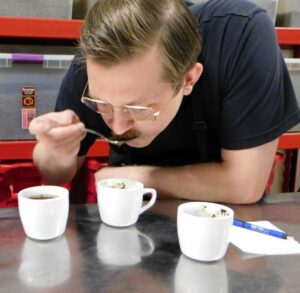
7. The Slurp
We need to talk about the coffee slurp. When people slurp coffee it looks (and sounds!) pretentious. Yet, slurping coffee does serve an important purpose. You want as much air in your mouth as possible when you’re tasting coffee and the slurp accomplishes that. It also helps distribute the coffee over your entire mouth. Choose for yourself if you do or don’t want to be a coffee slurper, but know that it actually does serve a good purpose.
Best Coffee Beans for Cupping
Factors to Consider When Choosing Beans for Cupping
Coffee Varieties
While there are many varietals of coffee, the two most common are Robusta and Arabica. These strains are the ones most commonly enjoyed by coffee lovers everywhere. Robusta is often stronger, harsher and more bitter. They often have grainy or rubbery overtones. It is usually considered the less desirable coffee. Arabica coffees are smoother and sweeter with more pleasant flavour notes. All of Cupper’s coffees are of the Arabica varietal.
Coffee Roast
The degree of roast for the coffee will also affect the flavour. Coffee roasts can be light, medium or dark, with many shades in between. For more info on coffee roasting, check out our Ultimate Guide to Coffee Roasting.
Region and Altitude
Coffee is a picky plant, preferring to grow near the equator. But coffee growing is not just about location, location, location. Region, soil type and quality, altitude, temperature, and rainfall all affect the taste. A bean crop will usually have consistent flavours year after year. The more delicate flavours can vary a bit depending on the season.
Processing
Before roasting coffee, it must first get processed into dry green beans. To get green coffee, the cherry of the bean is separated from the fruit pulp. There are several different ways to do this. Each processing method has an impact on the sweetness, body, and acidity of the coffee once it’s brewed.
Top Coffee Beans for Cupping
Our classic medium roast, our Ethiopia Yrgecheffe is a true gourmand’s delight. You might wonder why isn’t everyone drinking this coffee? The aroma tantalizes with a hint of citrus and a soft caramel finish. The full-bodied coffee offers layers of flavour. You’ll pick up on notes of cocoa nibs, brown sugar, and cashew, with a subtle hint of black pepper spice. It’s no wonder why this coffee from southern Ethiopia is highly prized all over the world.
The Brazil Bourbon Santos as a medium roast coffee is amazing! The fresh roasted whole beans have a sweet, cola-like aroma. The aroma carries over into the brewed coffee. The body is rich and syrupy. These sun-dried beans have a stone-fruit sweetness, with brown sugar and molasses notes. At the end of the coffee, you’ll taste a subtle dark chocolate note. We’re in love with this coffee!
We source our Guatemala Antigua medium roast coffee from the Quezaltepeque area. It’s an organic, fair trade, and high-altitude coffee. It’s medium-bodied with a creamy texture and superb balance. In the aroma, delicate magnolia and chocolate are present. In the flavour notes, cashew nuttiness comes forward. Milk chocolate and buttercream compliment those notes. This Guatemalan coffee is extraordinary at both medium and dark roasts.
Our India Mysore medium roast coffee is amazing! This comes from the Mysore region of India and is Rain Forest Alliance certified. The aroma is super stunning, so take a good whiff! You’ll get a preview of the flavours: nutmeg, sweet pipe tobacco, and a hint of almond. This coffee has a light, silky body at our medium roast, and the flavours are delightful. You’ll taste an earthiness, with hints of molasses, licorice, and sweet pipe tobacco.
Our Kenya AA medium coffee from Kilimanjaro is the bomb dot com! You won’t find a more distinctive aromatic and flavourful coffee anywhere else. African coffees are famous for their fruity notes, and this one is no exception. It’s got a slight dryness and crisp acidity that sets it apart from other African coffees. Some coffee aficionados swear they taste blueberry or black currant. The flavours of our Kenya AA Medium Coffee are cantaloupe, allspice, and cinnamon – yum!
Conclusion
Cupping is an excellent way to train your taste buds and palette for coffee, and a whole host of other foods as well. Think of wine tasting, cheese tasting, or beer tastings. Coffee cupping is very like these in one regard. It doesn’t matter what anyone else likes or doesn’t like in the final product. What is important is what you get out of tasting your coffee. If you find a coffee you really love, and you like to compare to other coffees, you’re doing a great job of cupping!
